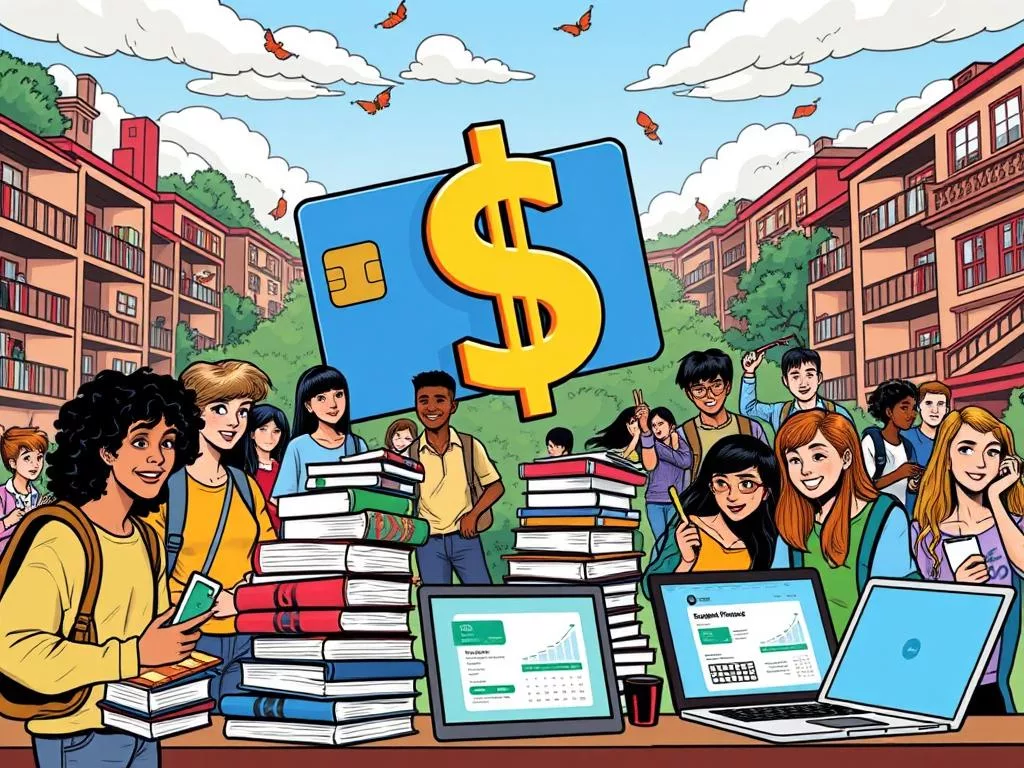Finding the right student credit card can be tough, even without a steady income. These cards are made for college students. They often have lower income needs than regular credit cards. It’s key for young adults wanting to manage their money and build credit.
Many credit card companies look at more than just income. They might consider scholarships, family help, or even future job prospects. This guide will help students without income find the best credit card options.
Credit card companies look at your credit history, grades, and how much you might earn in the future. This ensures they get a full picture of your financial situation. For more tips on getting credit cards without income, check out this detailed guide.
Understanding Student Credit Cards
Student credit cards are special financial tools for those in higher education. They help students start and grow their credit history. This is key for financial health. Knowing about student credit cards shows they have features to help young adults use credit wisely.
These cards let students build credit with easier approval than regular cards. Issuers often look for students who are in school full-time. This makes it easier for those without jobs to get credit. The cards usually have lower limits to prevent students from overspending.

Student credit cards often come with great deals like low interest rates and cash back. These perks are great for students with little money. Using these cards wisely helps students prepare for future financial needs, like loans or renting.
Credit card companies also consider other income sources, like family help or scholarships. This means more students can get credit, even if they’re struggling financially. For more on student credit cards, check out this resource.
Guide to credit cards for students with no income
Students can find credit cards even without income. This makes it easier to start building their credit history early. Many issuers offer credit cards for students with income from allowances, scholarships, and grants.

Qualifying for a student credit card is not just about income. For example, the Quicksilver for Students and Savor Student cards from Capital One are made for college students. These cards don’t need a credit score to apply, making them easy to get.
It’s important to remember that federal loans for tuition don’t count as income for credit cards.
Here’s a comparison of popular student credit cards:
| Credit Card | Cash Back Rewards | Annual Fee | Sign-Up Bonus |
|---|---|---|---|
| Quicksilver for Students | 1.5% on all purchases | $0 | $50 after $100 spent in first 3 months |
| Savor Student | 3% at grocery stores, dining & streaming | $0 | $50 after $100 spent in first 3 months |
| U.S. Bank Altitude Go Secured | 4x points on dining | $0 | N/A |
Students can get great rewards even with little income. Using these cards wisely and paying on time can improve their credit score. Checking out Airtel Finance can help understand and manage credit better.
Steps to Improve Approval Chances
For students without a steady income, getting a credit card can be tough. A good approval tip for student credit cards is to look for cards made for students. Many issuers know students have different money situations and set their rules to fit.
Showing all financial help, like scholarships and family money, can help too. It makes you look better to the credit card companies, raising your approval chances.
Applying for secured credit cards is another smart move. They’re easier to get and help start a credit history. About 30% of students with low scores use them.
Keeping up with payments and using debt repayment methods can boost your score. This shows you’re serious about managing money well.
Waiting six months between credit card applications is wise. It helps avoid hurting your credit score. Also, some cards offer rewards that encourage good spending habits.
Using tools that check if you qualify without hurting your score is smart. It helps you find the right card and build a strong credit history over time.

